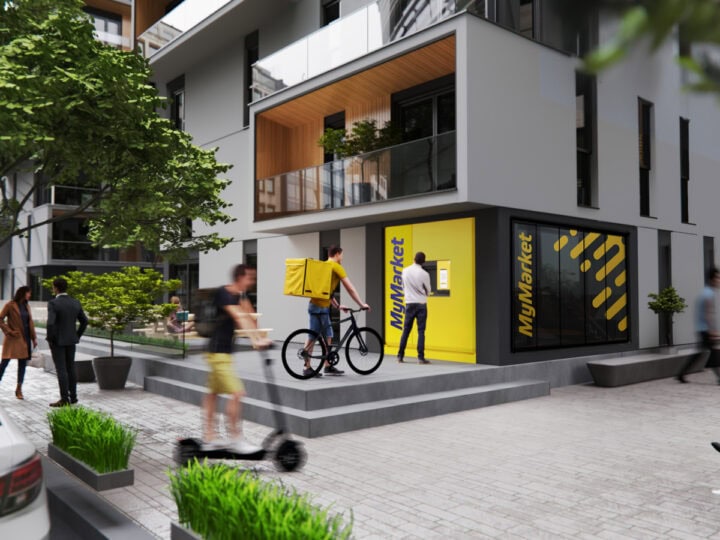Roosters are best known for waking people up at dawn as they announce the start of a new day. But when the Rooster is a robot, it can also save people’s lives.
The Rooster is a new robot from Israeli startup RoboTiCan that can help reach injured victims of natural disasters where it’s not safe to send a human rescue worker.
Rooster got its name from the fowl’s preference for walking but being able to fly when necessary, Ofir Bustan, RoboTiCan’s COO, tells ISRAEL21c. “Most of the time it walks, but when it runs into an obstacle, it can hover and fly.”
That makes Rooster different from most other search-and-rescue robots, which can either walk or fly but not both – meaning they can get stuck or are too high above the ground to search effectively for survivors.
RoboTiCan’s highly maneuverable Rooster is one tough bird. The 30-by-40-centimeter (11.8-by-15.7-inch) robot rolls inside a metal “cage,” which allows it “to take some pretty hard hits,” Bustan says. “It can crash from six meters high and keep on working.”
It’s the robot’s communications that really sets it apart, Bustan explains. A team of Roosters, which can be deployed simultaneously by a single operator, set up their own independent “wireless mesh network” so they can talk to each other and the operator over a distance of hundreds of meters. No need for a cellular connection, which may be offline anyway in a disaster situation.
The operator can also send out a single Rooster and, when it reaches as far into the disaster zone as its communications will carry, send a second Rooster out. The signals will be relayed back to the operator piggyback style.
The Rooster is not an artificially intelligent robot – SkyNet from the Terminator movies is not a reality yet. It is, however, an autonomous robot.
Bustan explains. The first robots were just dumb machines, he says. In an assembly line, there might be “a giant arm that knows it needs to move 30 degrees to the left and clamp down, without knowing what it’s gripping. If there’s a mistake, the robot just stops” and waits for an operator to tell it what to do next.
Autonomous robots, by contrast, can take small decisions on their own and solve problems. “Autonomous robots will become the standard for smart manufacturing in the next 20 years,” Bustan adds.
It started with a DIY robot
RoboTiCan launched in 2011 when three students at Ben-Gurion University of the Negev’s robotics lab wanted to work with the open-source programming language ROS – it stands for “robot operating system” – but couldn’t afford the robot on which to run the code.
Autonomous robots with four wheels and a full kit of sensors – 3D cameras, ultrasonic sensors for distance, pulsed laser LiDAR – can run up to $120,000 a piece, Bustan tells ISRAEL21c. “The price tags were ridiculous. So the company’s founders decided to build one of their own. They were able to get the price down to around $20,000.”
They sold their homemade robot to research units within Ben-Gurion and then to other universities that were also researching autonomous robotics.
The business grew and the founders decided to expand to the private sector. The Israeli Ministry of Defense is a client as are a few “big customers that want to deploy a fleet of service robots,” Bustan says, without naming names.
Rooster, the most recent addition to the RoboTiCan fleet, came out of stealth in October at the Nextech 2017 conference in Beersheva, where RoboTiCan happens to be based.
That announcement led to more demand than the company currently can deliver. “We have many countries asking about the product,” including Mexico, Israel and the UK, says Bustan.
The Israeli Army’s Home Front Command had the Rooster in their toolkit when they flew to Mexico to help with post-earthquake efforts in September, although Bustan doesn’t know if it was used.

RoboTiCan’s other robots are deployed by the defense industry, academia, private sector and governments across the world.
Rooster’s “cousins” have similarly cutesy names, for example Komodo, ARMadillo, TurtleBot and KREMEBOt, the latter a sweet play on the chocolate-coated marshmallow treats loved by Israeli children (and presumably robot makers during late-night manufacturing sessions).
All of RoboTiCan’s robots start their autonomous lives in Israel where the prototypes are built. Actual manufacturing is outsourced, then the robot is sent back to Israel for final assembly.
Now, that’s something to crow about.
For more information, click here

















